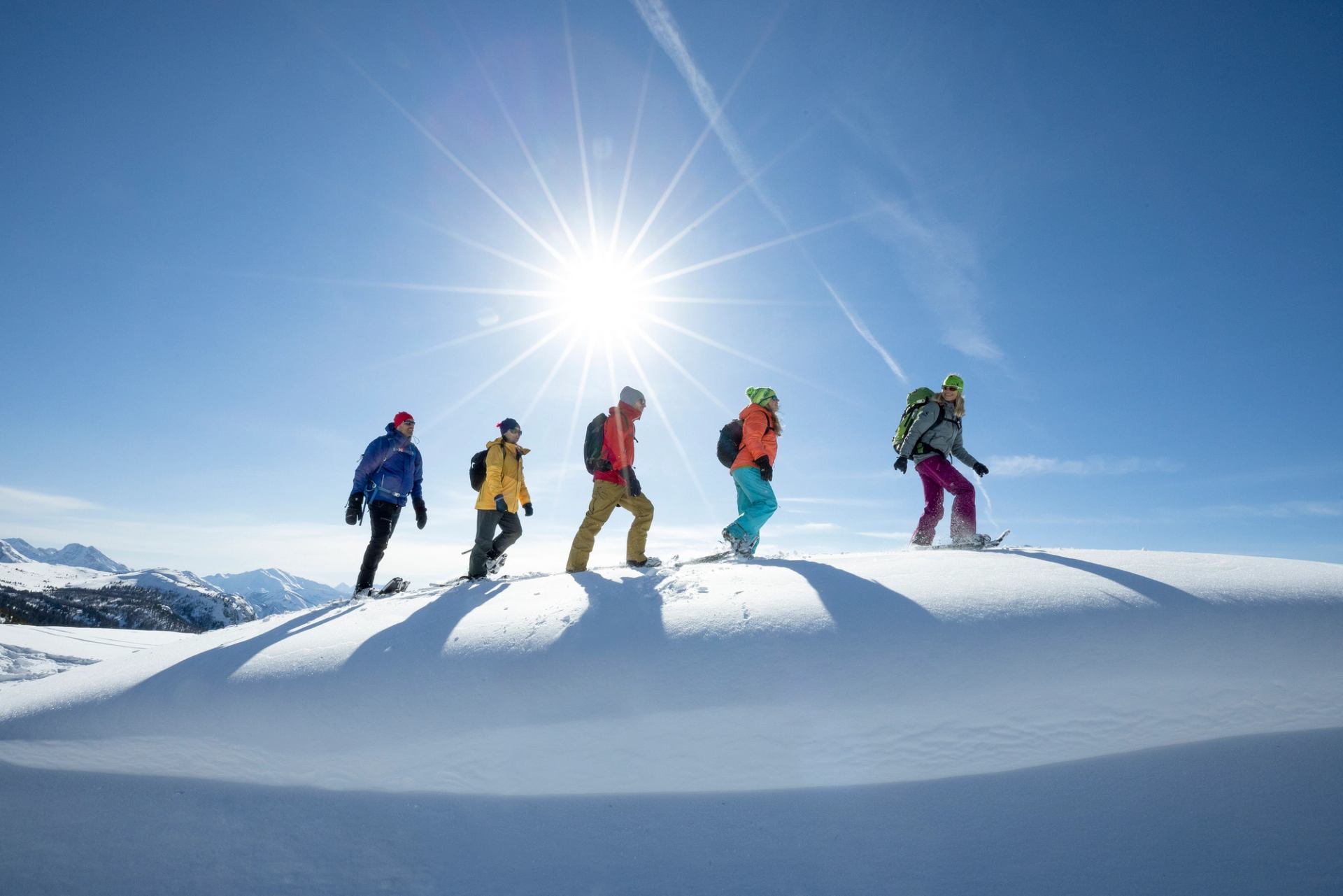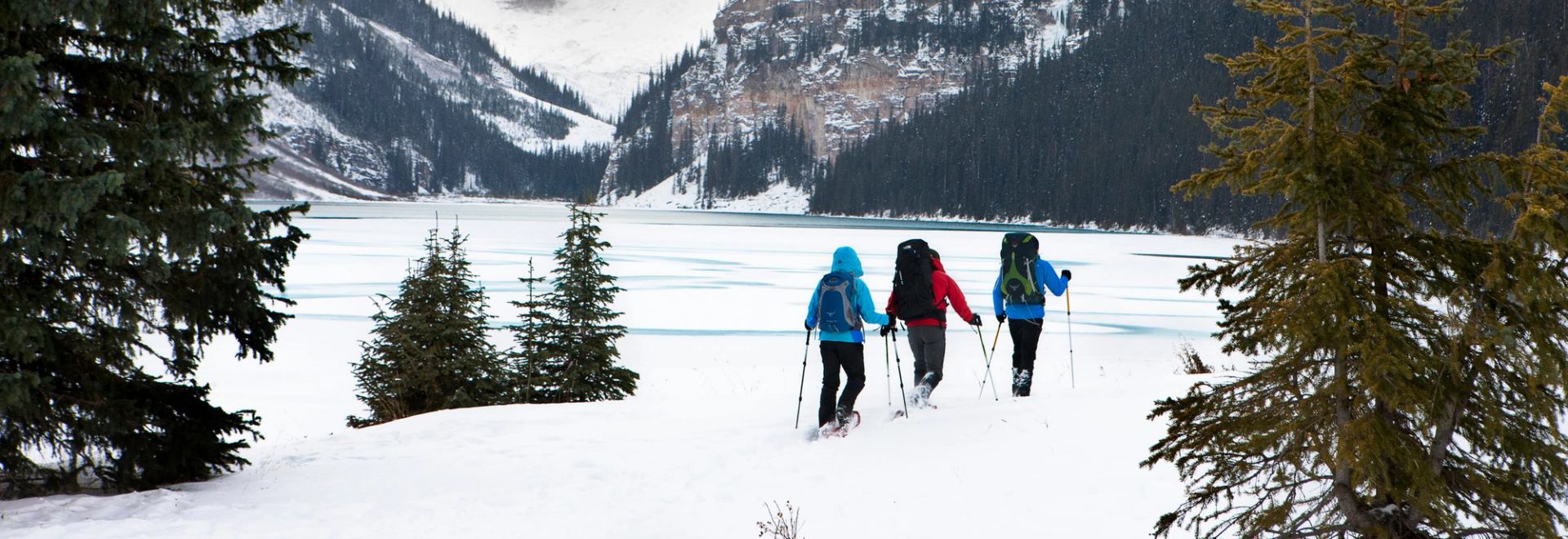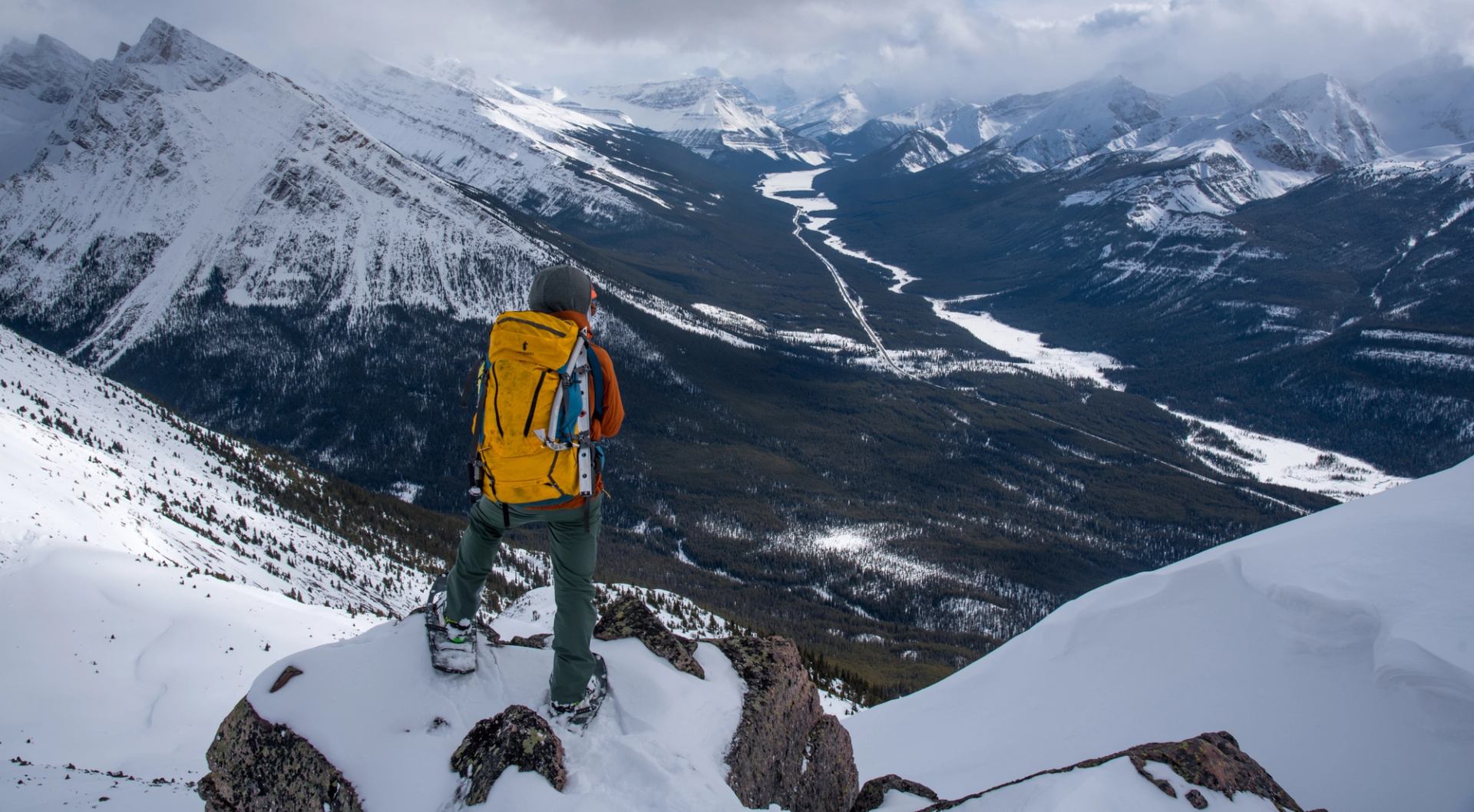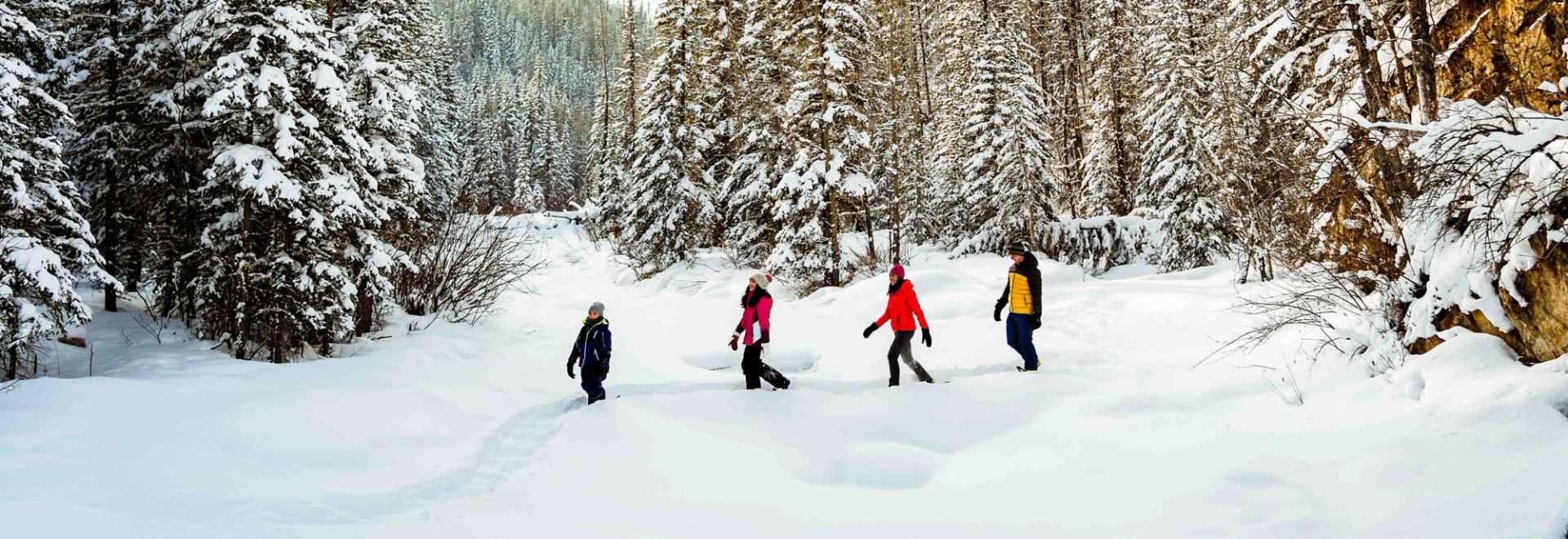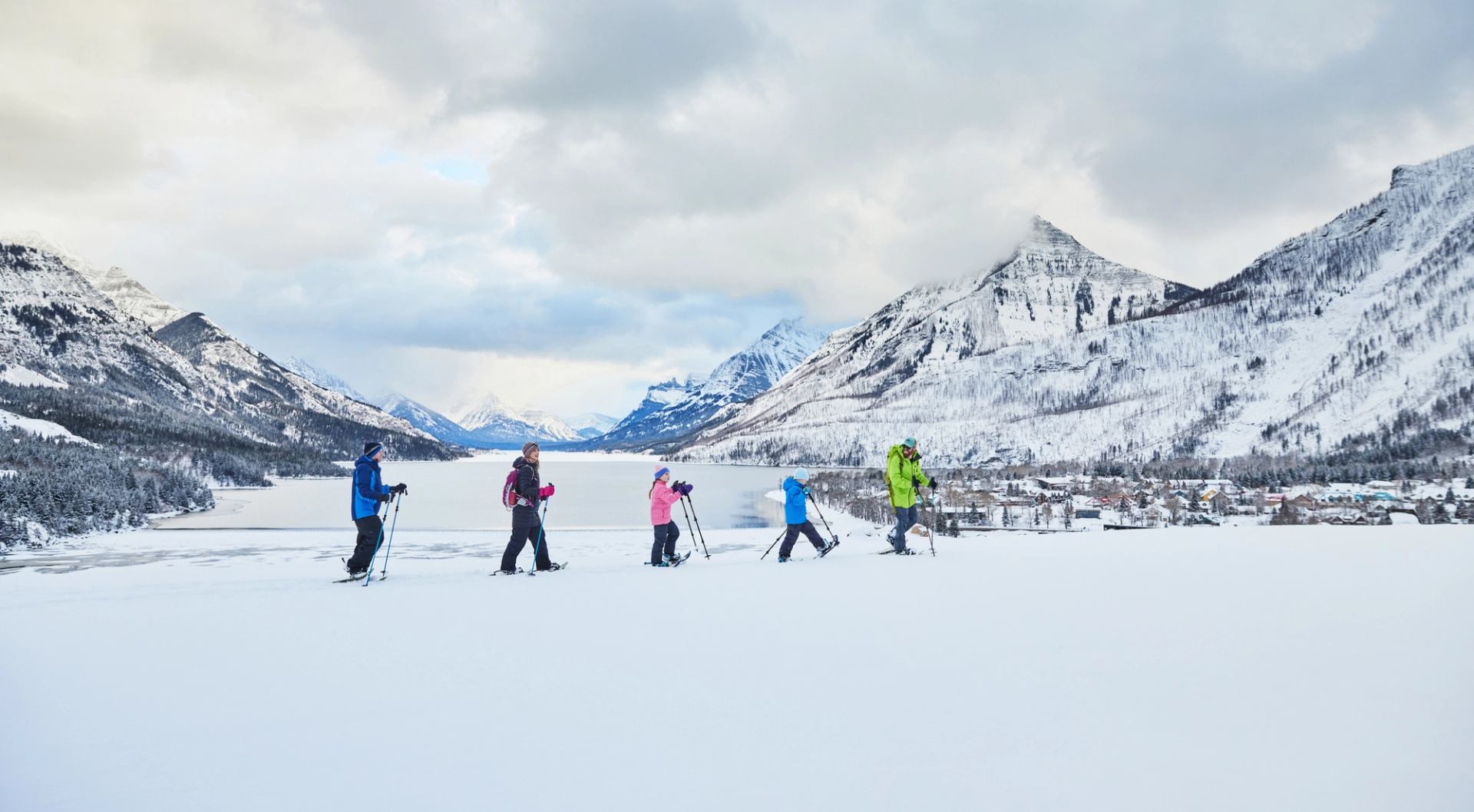A winter activity that will get your heart beating
Snowshoes have been around for thousands of years. They were used by Indigenous groups to get around in the winter. The idea behind them is ingenious. A snowshoe is shaped to distribute your weight so you stay on top of the snow. You’ll find that most of your cares also float away.
Modern snowshoes are small and lightweight. That means you can cover some ground without tiring yourself out. Along the way, you’ll find spectacular scenery and peace and quiet that is broken only by your breathing.
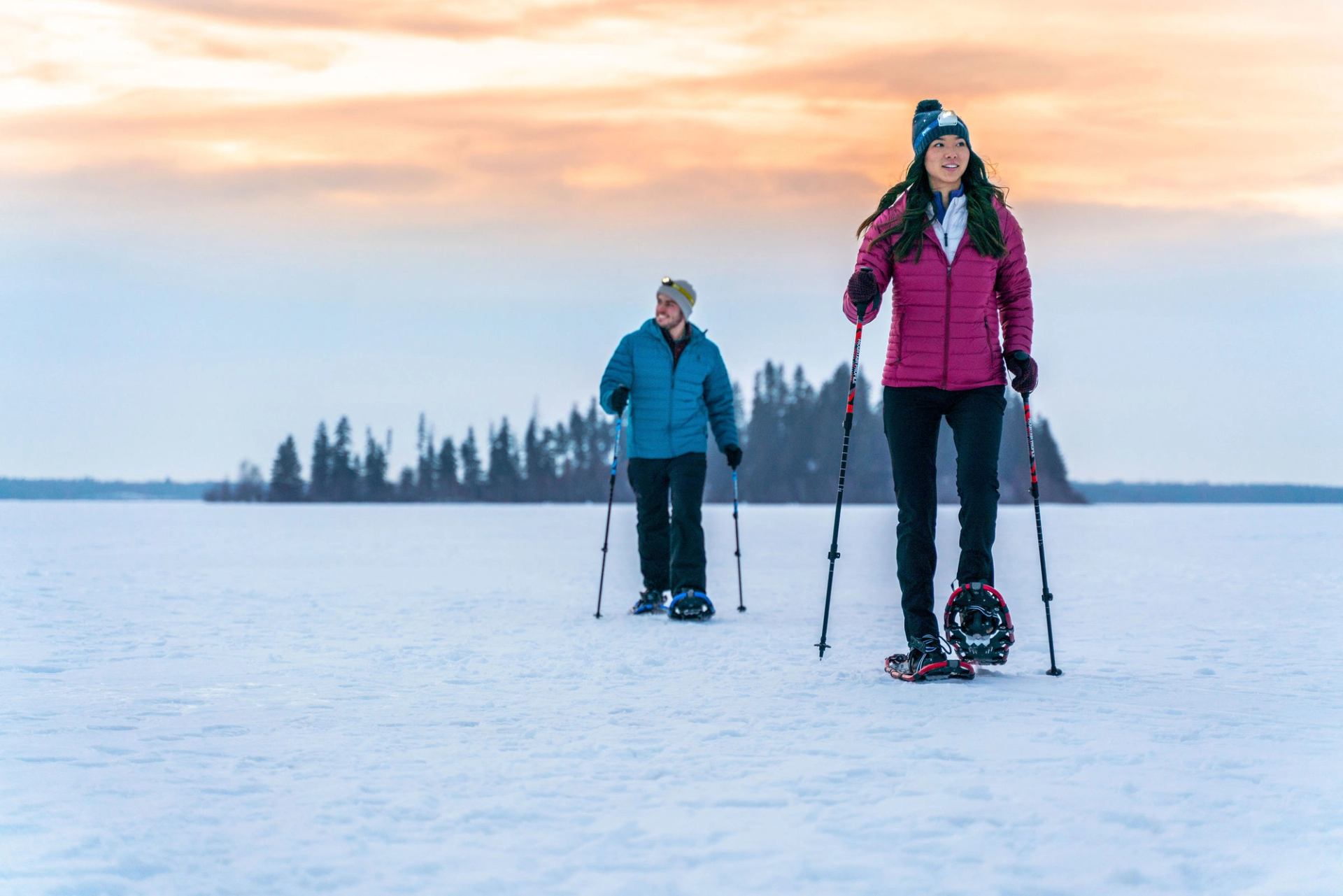
Featured location
Discover Elk Island in the quiet season
It’s easy to get to Elk Island National Park. It’s just 48 km (30 mi) east of Edmonton. It’s easy to get around Elk Island in the winter, too. The park’s trails are all open to snowshoers, so you can go for a quick jaunt on the Shoreline Trail or spend half a day going further afield to Tawayik Lake.
Scenic snowshoeing destinations
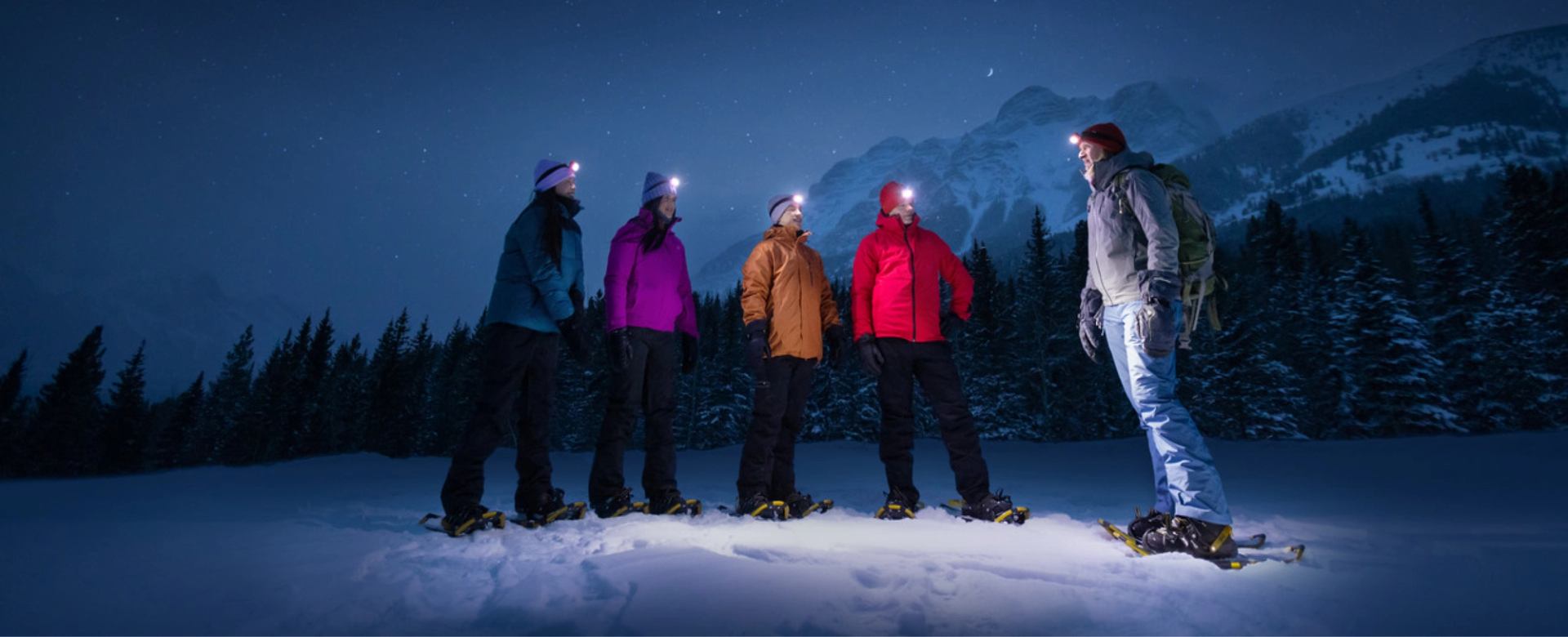
Featured experience provider
Get away from it all in the Rockies
Sunshine Meadows sits above the treeline and far from daily concerns. White Mountain Adventures leads snowshoeing tours that begin with a gondola ride followed by a quick chairlife to the top of Sunshine Village Ski Resort. From there, guests snowshoe into the Meadows for an exhilarating day out.
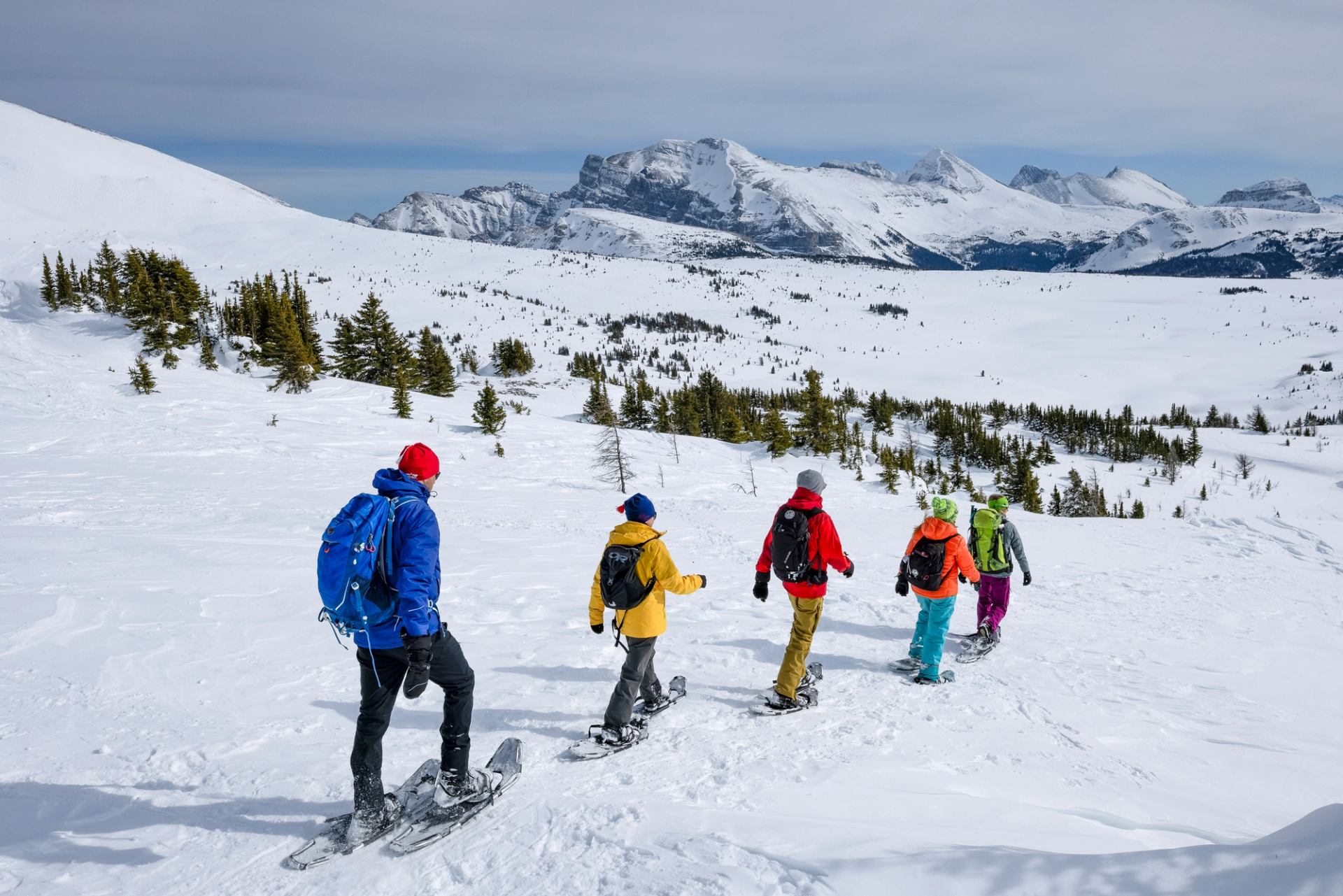
Frequently asked questions
No. Snowshoeing is only slightly trickier than walking. It’s beginner-friendly and you’ll get used to the snowshoes in a matter of minutes. It’s suitable for people of all ages and fitness levels.
Safety is essential when snowshoeing. Some important considerations include checking weather conditions before heading out, informing someone about your planned route and expected return time, and carrying essential safety equipment such as a map, compass, headlamp and a first aid kit. It's also crucial to avoid thin ice, be aware of avalanche risks and follow avalanche safety guidelines if you plan to venture into backcountry areas. A knowledgeable guide can help with all this.
It's important to dress in layers to regulate your body temperature. Wear moisture-wicking base layers, insulating mid-layers, and a waterproof and breathable outer shell. Don't forget warm socks, waterproof boots, gloves and a hat. Goggles are also a good idea. Bring extra clothing and spare socks in case you get wet.
If you don't own snowshoes, you can rent them from many outfitters and tour operators across the province. Rental options are available at various locations near popular snowshoeing trails. Make sure to choose the appropriate snowshoe size based on your weight and the type of terrain you'll be exploring.
Yes, there are numerous designated snowshoeing trails in Alberta's national parks, provincial parks, and recreational areas. Often these trails are shared with cross-country skiers. Information about the trails can be found at park visitor centres or online at albertaparks.ca or parks.canada.ca.
